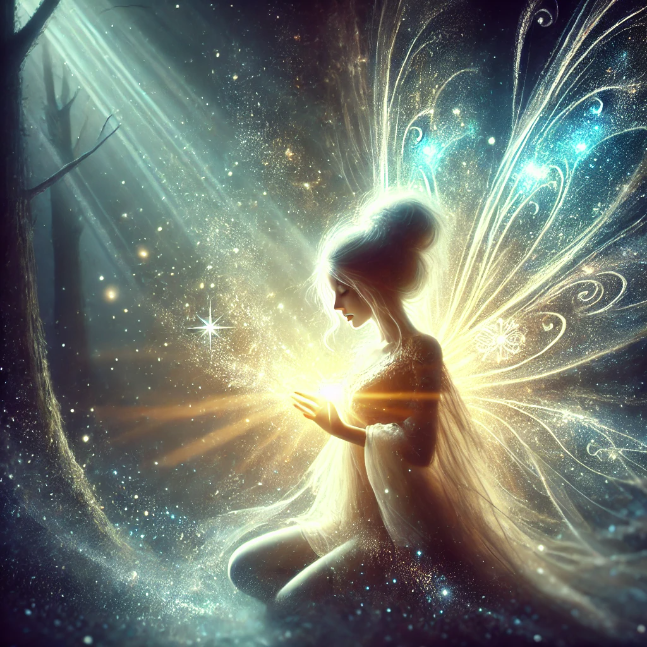Folktales and Fairy Tales: The Timeless Stories That Shape Cultures
-
Richard Pen
| Monday 8th of July 2024 04:06:00 PM (UTC)

Folktales and fairy tales are timeless narratives that have captivated audiences for centuries. These stories, often passed down through generations, reflect the values, beliefs, and traditions of the cultures from which they originate. From the Brothers Grimm to Hans Christian Andersen, folktales and fairy tales have influenced literature, art, and popular culture. In this article, we will explore the origins, characteristics, and enduring impact of these enchanting tales.
The Origins of Folktales and Fairy Tales
Folktales and fairy tales originate from the oral traditions of various cultures. These stories were shared by storytellers around campfires, in village squares, and in homes, often serving as both entertainment and moral instruction. The earliest folktales can be traced back to ancient civilizations, including Egypt, Greece, and India, where they were recorded on papyrus scrolls and clay tablets.
Oral Tradition
Folktales were initially passed down orally, evolving with each retelling. Storytellers would adapt the tales to reflect their own experiences and the cultural context of their audience. This oral tradition allowed the stories to remain dynamic and relevant, while also preserving the core elements that made them memorable.
Literary Collections
The transition from oral tradition to written form marked a significant development in the preservation of folktales and fairy tales. Collections such as "The Arabian Nights," "Grimm's Fairy Tales," and "Aesop's Fables" played a crucial role in documenting these stories. These collections not only preserved the tales for future generations but also introduced them to a wider audience.
Characteristics of Folktales and Fairy Tales
Folktales and fairy tales share several common characteristics that distinguish them from other types of narratives. These elements include:
Universal Themes
Folktales and fairy tales often explore universal themes such as good versus evil, love and sacrifice, and the triumph of the underdog. These themes resonate with audiences across different cultures and time periods, making the stories timeless and relatable.
Moral Lessons
Many folktales and fairy tales convey moral lessons or ethical principles. They teach values such as honesty, kindness, bravery, and perseverance. For example, the story of "The Boy Who Cried Wolf" warns against the dangers of lying, while "Cinderella" emphasizes the virtues of patience and humility.
Magical Elements
Fairy tales, in particular, are known for their magical elements and fantastical settings. Characters may encounter talking animals, enchanted forests, and powerful sorcerers. These magical components add a sense of wonder and excitement to the stories, captivating the imagination of readers and listeners.
Simple Plot Structure
Folktales and fairy tales typically follow a straightforward plot structure, with a clear beginning, middle, and end. The narrative often involves a journey or quest, where the protagonist faces challenges and overcomes obstacles. This simplicity allows the stories to be easily understood and remembered.
The Impact of Folktales and Fairy Tales
The influence of folktales and fairy tales extends beyond their original cultural contexts. These stories have shaped literature, inspired art, and contributed to the development of popular culture.
Literary Influence
Folktales and fairy tales have inspired countless works of literature. Authors such as Charles Dickens, J.R.R. Tolkien, and J.K. Rowling have drawn upon the themes and motifs of these traditional stories in their own writing. The enduring appeal of folktales and fairy tales lies in their ability to convey profound truths through simple, yet powerful narratives.
Artistic Expression
The visual arts have also been deeply influenced by folktales and fairy tales. Illustrators like Arthur Rackham and Edmund Dulac created iconic images that brought these stories to life. The themes and characters of folktales and fairy tales continue to inspire contemporary artists, from painters to filmmakers.
Cultural Heritage
Folktales and fairy tales are an important part of cultural heritage, preserving the beliefs and values of the societies from which they originate. These stories provide insight into the customs, traditions, and worldviews of different cultures, fostering a sense of shared identity and continuity.
Popular Culture
In modern times, folktales and fairy tales have become an integral part of popular culture. Animated films by Disney, adaptations of classic tales, and new interpretations of old stories continue to captivate audiences around the world. These adaptations often bring a fresh perspective to the traditional narratives, making them relevant for contemporary audiences.
Exploring Related Topics
For a deeper understanding of how storytelling has evolved over time, you can explore our article on The Written Word: A Timeless Journey Through Human History. This article delves into the history and development of writing and its impact on culture and communication.
Conclusion
Folktales and fairy tales are more than just stories; they are a reflection of our collective imagination and cultural values. They have the power to entertain, educate, and inspire, transcending time and place. At TxtTale.com, we celebrate the rich tradition of these timeless tales and invite you to explore their enchanting world. By understanding and appreciating these stories, we can connect with our cultural heritage and discover the enduring magic of storytelling.
Start the conversation
Become a member of TxtTale to start commenting.
Already a member?
